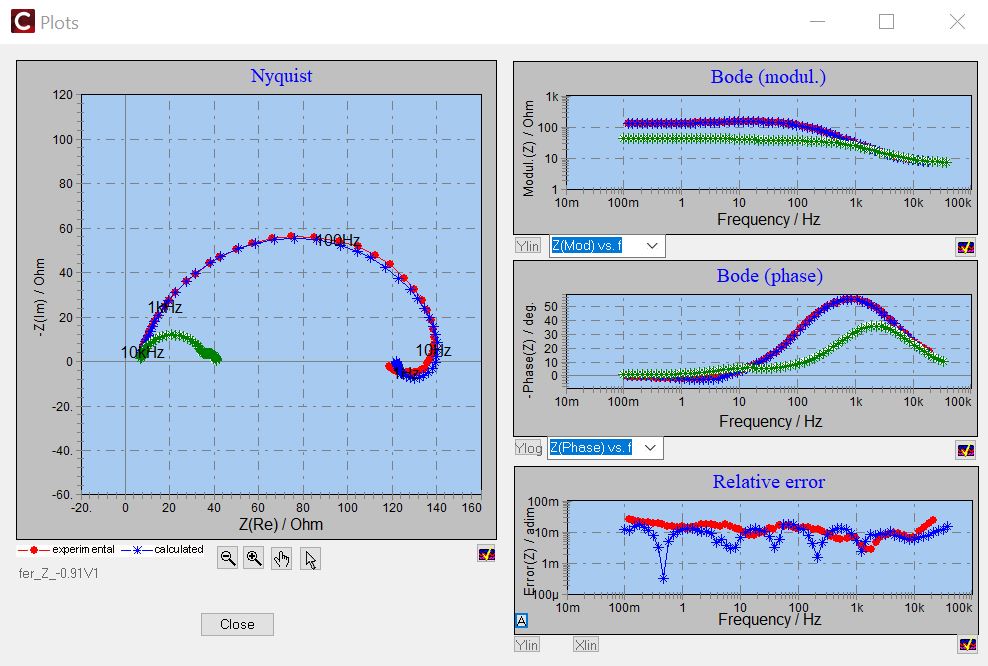Contact : François HUET
The SIMAD software can be used to simulate and adjust experimental electrochemical impedances, or more generally complex variable transfer functions, by the downhill simplex method, from a model based either on an equivalent circuit, or on electrochemical kinetic equations describing a reaction mechanism. The latter feature is not available in commercial electrochemical impedance fitting software.
The originality of the software lies in its ability to build impedance models in the form of a sequence of commands allowing analytical functions. The advantages are identical to those obtained with the use of a computer program without prior knowledge of a programming language. Most of the tools currently on the market offer libraries of pre-established elementary components (equivalent electrical circuits, diffusion models, etc.), limiting their use to simplified modeling of electrochemical impedances.
Various functionalities have been developed, such as:
• the sensitivity coefficient for each parameter, which is essential for validating the parameter value, is automatically calculated for each adjustment. The “chi vs. parameter” curve, on which the sensitivity coefficient calculation is based, can be generated.
• a “Consecutive adjustments” submenu allows several experimental impedance arrays to be adjusted automatically after having defined the adjustment model.
• an "Operations" submenu for performing operations on experimental impedance arrays, e.g. calibrating an experimental file, removing electrolyte resistance at all impedance frequencies, calculating the admittance of a measured impedance, adding or subtracting impedances, calculating complex capacitance, etc.
• the parameters of a single analytical model can be adjusted simultaneously on several experimental tables of impedance measured at different potentials, possibly followed by a current-voltage curve.
• a current-voltage curve can also be fitted or simulated to obtain kinetic parameters.
• the values of secondary parameters, such as charge transfer resistance, rate constants... used in the kinetic model, are displayed on the main page to avoid having to recalculate them from the values of the adjusted parameters. In the case of simultaneous adjustment of impedances measured at different potentials, the secondary parameters are displayed for each potential.
• Each adjustment from a kinetic model can be saved in a text file containing the model, the names of all the experimental files used, the masked frequencies, the optimal chi-square value, as well as the values of the fitted parameters and those of the secondary parameters for all the experimental files used.
As an example, the figure below shows Simad's main page in which 2 experimental impedance arrays have been opened (highlighted in blue). They correspond to the impedances of the iron/H2SO4 system measured at potentials -0.91 V/SSE and -0.6 V/SSE, which have been fitted using the classical analytical model with 2 electrochemical reactions described at the top right of the page.
The following figure shows the plots of experimental and adjusted impedances in Nyquist and Bode diagrams, together with the relative errors obtained for each impedance.










